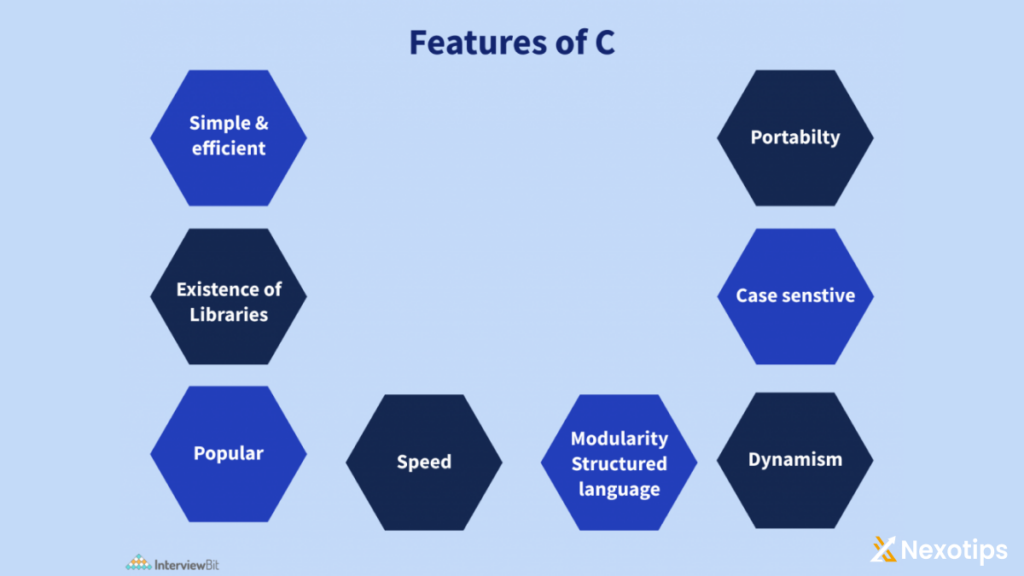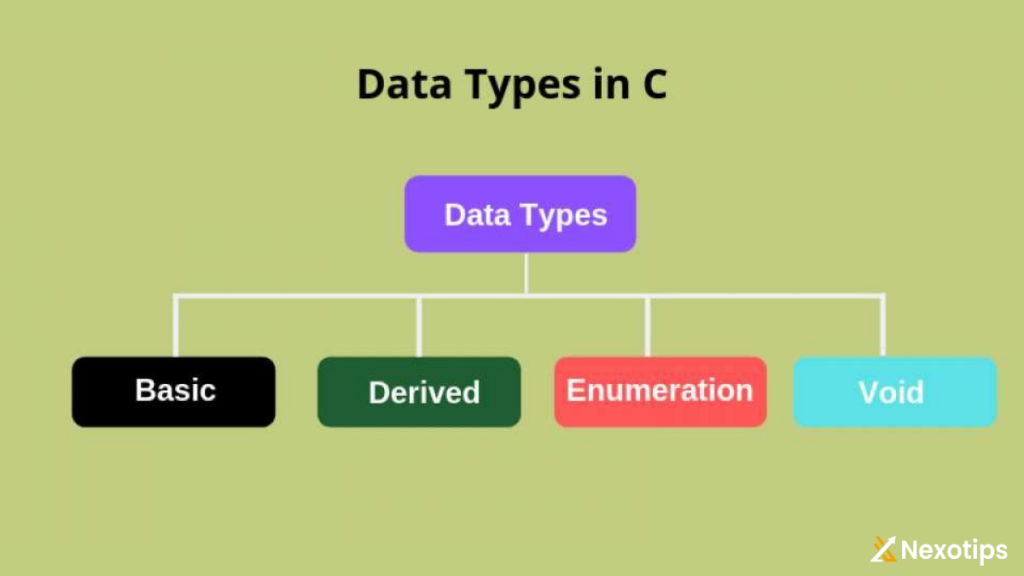
C Programming Language: An Extensive Introduction
Table of Contents
1. Introduction of C Programming Language.
The C programming language, developed in the early 1970s, is a powerful and flexible language that serves as the foundation for many modern programming languages. Known for its efficiency, portability, and versatility, C has been instrumental in the development of software ranging from operating systems to complex applications. This comprehensive guide aims to introduce you to the fundamental concepts, features, and structures of C, providing a solid foundation for beginners and a refresher for experienced programmers.
2. History and Evolution of C Programming Language.
C was created by Dennis Ritchie at Bell Labs between 1969 and 1973 as an enhancement to the B language, which was itself influenced by the BCPL language. The primary motivation for developing C was to provide a language that was powerful enough to write operating systems yet simple enough to understand and use. The first major application of C was in the development of the UNIX operating system, which cemented its place in the programming world.
Since its inception, C has undergone several standardizations to improve its features and maintain its relevance. The American National Standards Institute (ANSI) standardized C in 1989 (ANSI C), followed by the International Organization for Standardization (ISO) in 1990. These standards ensure that C remains consistent and portable across different systems and platforms.

3. Features of C Programming Language.
C is renowned for its unique features that make it a preferred choice for system-level programming:
- Simplicity: The syntax of C is straightforward and easy to learn, making it an excellent choice for beginners.
- Portability: Programs written in C can be easily transferred to different machines with minimal modifications.
- Efficiency: C provides low-level access to memory and system processes, allowing for high performance.
- Modularity: C supports functions and modular programming, which helps in organizing and managing complex programs.
- Rich Library: C comes with a vast standard library that provides numerous built-in functions for various tasks.
- Flexibility: C is a versatile language that can be used for system programming, application development, embedded systems, and more.
4. Basic Syntax and Structure of C Programming Language.
Understanding the basic syntax and structure of C is essential for writing functional programs. Here is a simple “Hello, World!” program in C:
#include <stdio.h>
int main() {
printf("Hello, World!\n");
return 0;
}- Preprocessor Directive:
#include <stdio.h>tells the compiler to include the standard input-output library before compiling the program. - Main Function:
int main()is the starting point of any C program. The execution begins from this function. - Print Function:
printf("Hello, World!\n");prints the string “Hello, World!” to the console. - Return Statement:
return 0;indicates that the program terminated successfully.

5. Data Types and Variables of C Programming Language.
C provides a variety of data types to handle different kinds of data:
- Basic Data Types:
int,char,float,double - Derived Data Types: arrays, pointers, structures, unions
- Enumeration Data Type:
enum
Example of declaring variables:
int age = 25;
char initial = 'A';
float height = 5.9;
double pi = 3.14159;6. Operators in C Programming Language.
Symbols known as operators are used to manipulate values and variables. C supports a wide range of operators:
- Arithmetic Operators:
+,-,*,/,% - Relational Operators:
==,!=,>,<,>=,<= - Logical Operators:
&&,||,! - Assignment Operators:
=,+=,-=,*=,/=,%= - Bitwise Operators:
&,|,^,~,<<,>> - Increment and Decrement Operators:
++,-- - Conditional Operator:
? :
Example usage:
int a = 5, b = 10;
int sum = a + b; // sum = 15
int diff = b - a; // diff = 5
int product = a * b; // product = 50
int quotient = b / a; // quotient = 2
int remainder = b % a; // remainder = 07. Control Structures of C Programming Language.
Control structures determine the flow of execution in a program. C supports several control structures:
- Conditional Statements:
if,if-else,switch - Loops:
for,while,do-while - Jump Statements:
break,continue,goto
Example of a control structure:
int num = 10;
if (num > 0) {
printf("The number is positive.\n");
} else {
printf("The number is not positive.\n");
}
for (int i = 0; i < 5; i++) {
printf("i = %d\n", i);
}8. Functions in C Programming Language.
Functions are blocks of code that perform specific tasks and can be reused throughout the program. A function typically has a return type, a name, parameters, and a body.
Example of a function:
#include <stdio.h>
int add(int a, int b) {
return a + b;
}
int main() {
int sum = add(5, 3);
printf("Sum: %d\n", sum);
return 0;
}9. Pointers and Memory Management of C Programming Language.
Pointers are variables that store memory addresses. They are a powerful feature of C, allowing for dynamic memory allocation and efficient array and structure manipulation.
Example of a pointer:
int var = 20;
int *ptr = &var;
printf("Address of var: %p\n", &var);
printf("Value of ptr: %p\n", ptr);
printf("Value pointed to by ptr: %d\n", *ptr);Dynamic memory allocation functions include malloc, calloc, realloc, and free.
10. Structures and Unions of C Programming Language.
Structures and unions allow grouping of variables of different types under a single name.
Example of a structure:
struct Person {
char name[50];
int age;
float height;
};
struct Person person1;
person1.age = 25;
person1.height = 5.9;
strcpy(person1.name, "Alice");Example of a union:
union Data {
int i;
float f;
char str[20];
};
union Data data;
data.i = 10;
data.f = 220.5;
strcpy(data.str, "C Programming");
11. File Handling in C Programming Language.
File handling enables programs to read from and write to files, making data storage and retrieval possible.
Example of file handling:
#include <stdio.h>
int main() {
FILE *fptr;
fptr = fopen("file.txt", "w");
if (fptr == NULL) {
printf("Error opening file!\n");
return 1;
}
fprintf(fptr, "Hello, World!\n");
fclose(fptr);
return 0;
}12. Common Libraries and Header Files
C comes with a variety of libraries and header files that provide numerous functions and macros for different purposes:
- Standard I/O Library:
#include <stdio.h> - String Handling Library:
#include <string.h> - Mathematics Library:
#include <math.h> - Standard Library Functions:
#include <stdlib.h> - Time Handling Library:
#include <time.h>
13. Debugging and Error Handling
Effective debugging and error handling are crucial for writing robust programs. C provides various tools and techniques:
- Compiler Warnings and Errors: Understand and resolve compiler messages.
- Debugging Tools: Use tools like GDB (GNU Debugger) for debugging.
- Error Handling Functions: Functions like
perrorandstrerrorcan be used to print descriptive error messages.
Example of error handling:
#include <stdio.h>
#include <errno.h>
int main() {
FILE *fptr = fopen("nonexistentfile.txt", "r");
if (fptr == NULL) {
perror("Error");
return errno;
}
fclose(fptr);
return 0;
}14. Best Practices for C Programming Language.
To write efficient and maintainable C programs, follow these best practices:
- Consistent Naming Conventions: Use meaningful and consistent names for variables and functions.
- Modular Code: Break down the code into functions and modules.
- Comments and Documentation: Use comments to explain complex logic and document the code thoroughly.
- Error Checking: Always check the return values of functions and handle errors appropriately.
- Memory Management: Ensure proper allocation and deallocation of memory to avoid leaks and corruption
Other’s: Everyday Types: For Best Understanding The Different Personalities And Their Impact On Daily Life.
